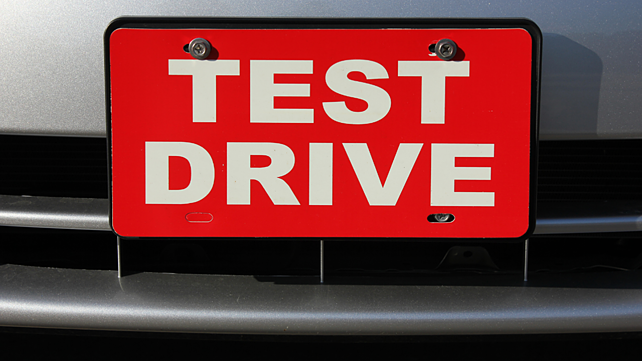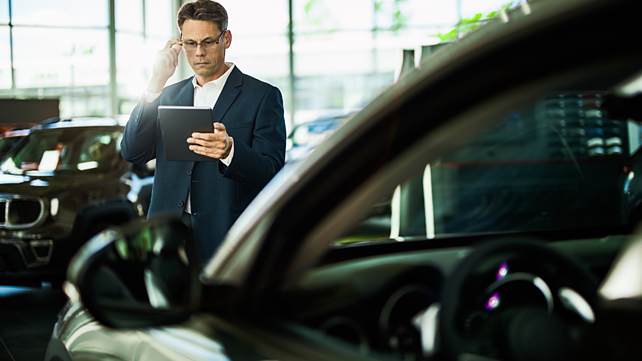
In 2020, every single day of a countrywide lockdown cost the automotive industry INR 2,300 crore. This year, the loss per day has been reduced, in part because many brands and dealers have turned to digital to overcome the lockdown impact. In this article, we explore how the pandemic is changing automotive lead response, and the impact it has on test drives and bookings generated.
Majority of car buyers start on digital
According to a report, 95% of car buyers now research online before they buy, and 72% research online to find their dealer. In November 2020, Maruti Suzuki released data about their digital channel, introduced in 2018.
The company said their digital channel had generated over 21 lakh customer enquiries, and resulted in over 200,000 units sold since April 2019. This is a significant number – almost 14% of Maruti’s total sales volume of 1,436,124 vehicles for FY20.
In fact, digital enquiries for Maruti Suzuki have seen a five-fold increase to around 20% of total sales, and jumped to over 33% during the first five months of the lockdown period in 2020. Customers, who enquired through this digital channel, ended up purchasing a car within 10 days.
This shows the important role that digital plays right at the start of the car buying process, and how interested automotive customers are making use of digital for the rest as well. But there’s a problem – are automotive dealerships ready for meeting customers on digital?
How ready are dealerships for engaging customers on digital?
Global market research firm Ipsos conducted a digital audit of India’s top seven automakers in the passenger cars segment. Their mystery shopping study showed that just less than half (48%) of digital leads got a response, and only two in three (67%) were offered a test drive.

While not all digital leads are being contacted or offered test drives, the data from Google shows that 60% of car buyers make their decision after they take a test drive – a huge missed opportunity if leads that call are not offered a test drive.
Also, the Indian Automotive Consumer Canvas (IACC) organised by Mobility Outlook earlier this year shows that 65% of the respondents will not opt for an online platform due to lack of touch and feel of the vehicle. This means that not only is it a missed opportunity to close sales quickly, but is also an essential requirement for a majority of car buyers.
Importance of fast lead response to digital leads
There is a direct correlation between how long it takes a dealership to respond to leads, and their lead to test drive conversion ratio. Dealerships that have taken less than eight hours (same day) to respond show more conversions than those that respond the next working day or later.
A study of sales performance data shows that when digital lead response time is reduced from an automotive industry average of 60 hours to approximately five minutes, the test drive ratio starts increasing.
A brand or dealership that starts responding within 5-10 minutes of a query being raised will see up to 20% increase in the number of leads converting into test drives. It shows the sensitiveness of the relationship between these two metrics – lead response time and the test drive ratio.

What this means for the brand and their dealerships is that they can boost their conversion rate from the same leads they have now, and get more sales without any additional spending or new marketing campaigns to generate more leads.
Being the first to respond to a lead allows the dealership sales executive to speak as a customer advocate based on their preferences and budget – explaining to them what options they have instead of being sales-driven.
Once the customer has learnt about all the options from the first person who calls, and understood how the car buying process works, the dealerships that call afterwards have to deal with customers who have already made up their mind.
The limited number of dealership visits and/or test drives that a buyer opts for goes to the sales executive, who is the first to speak with the customer.
Responding to the pandemic
The disruption during the 2020 lockdown has led automotive brands to digitalise more touch points including lead capture, virtual showroom tours, fully online financing, customisation of the vehicle, and more. But 100% digital is a long way off.
What dealers found was that the test drive was moving further off into the sales process, after they had digitally provided all the information and interaction buyers wanted, instead of providing the test drive first at the showroom and then talking about the rest. This means more of the touch-points and sales process has gone digital as a result of the pandemic.

Our conclusion is that car sales is going to be 'phygital' for the moment, even after the pandemic ends. Digital leads must be responded to within five minutes, and enable your sales executive to offer a test drive at the customer’s location or at the showroom, within a short time of lead being raised. After that, encourage the customer to go back online to the website to purchase the vehicle and complete the rest of the paperwork.
This is a significant step forward in the digital transformation of the automotive industry, since only the initial discovery was being done digitally before the pandemic. Now, everything before and after the test drive has gone digital, and we’re talking about 100% online purchase and ecommerce automotive sales (only possible if you’re offering a simulator or other AR/VR tool using which customers can get a virtual test drive).
This is where automotive brands and dealerships should be at the moment. Those who haven’t set up digital tools to engage customers will be left behind as car buyers and other dealers go fully digital.
About the Author: Zal Dastur is Co-founder and COO of automotive lead distribution and response platform Lucep.